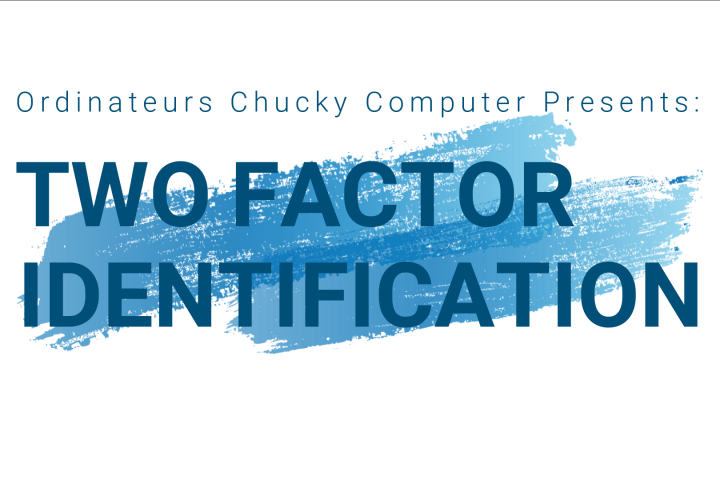There are many different uses for our computers and devices. Some people use technology as part of their job and others as a hobby. One thing that all these users have in common is that technology is a method of communication. Gone is the telephone conversation, we are in the era of emails and instant messaging. Let’s take a look at the most universal and well-known method of communication; an email. In this article we will discuss the types of email, the ways to access it, and finally the best practices.
Email Providers
Several companies offer email address services. They can be categorized as follows:
Internet Service Provider: When you are an internet customer, your provider gives you access to an address with their domain name. Examples: @bell. net, @sympatico. ca, @videotron. ca, @cogeco. ca, @teksavvy.com. The company offers it to you for free (nothing is free in life; the cost is in your internet price) with a basic limit that you can increase for an additional fee. These addresses are not bad, but they make you very dependent on your subscription with them which can be problematic. If you use this type of email address, I strongly recommend that you have a secondary one among the next following options. Think about it: a simple move or a change of internet provider will force you to change your email address! What a waste! Read on to find out the best solution
Internet service/product company: these companies are the giants of the internet today. Google (GMAIL), Microsoft (Outlook, Hotmail, Live, MSN), Apple (iCloud), Yahoo, AOL (okay, I’m not that old), and newer players like ProtonMail, Zoho Mail and GMX Mail. These products are free and easy to operate. Don’t be fooled, these services aren’t free: you and your data are the target or you are a potential customer for the other brand’s products. We will conduct a more comprehensive comparison of the major players in the field so that you can make a choice based on your preferences. To be continued…
Email/Web Hosting: Used largely by businesses/companies and self-employed individuals, web hosting services include email addresses linked to the domain name in their hosting services. (Example: info@ordichuckycomputers.ca) You do not need to be a business entity to take advantage of these services. You will have to find a domain name that suits you and then you can create email aliases. This service costs only a few dollars per year and can be set up in a few minutes. If you have a business, an email address based on your domain name (website) is the cornerstone of your digital identity in 2022. Just as a website gives a company a lot of credibility, your domain email will give your customers and future customer confidence.
Programs
Let’s now analyze the ways to access our emails.
Webmail: The basic gateway to all email services. Webmail is an internet page accessible from anywhere in the world. All you need is your email address and password, and you have access to your emails. Internet service providers offer a more than basic webmail experience. The same goes for domain addresses but it depends on the provider’s services. On the contrary, providers like GMAIL and Outlook offer a very comprehensive experience to their customers. They offer a complete suite including a calendar, a list of contacts, an instant messaging service and in the case of Microsoft, access to a basic version of the Office suite, and this, completely free. Same thing with Google with access to Docs, Sheets, etc. The majority of individuals and small businesses can manage their emails adequately with web access.
Microsoft Outlook: considered as the most complete email platform, Outlook is known internationally. Used by the majority of governments and businesses, it is distinguished by the endless list of features offered. Outlook is a versatile option that allows you to agglomerate your professional and personal e-mail addresses and synchronize your various calendars. The program has only changed a little through the different versions so it’s easy to find your way around. In addition, you have 1001 ways to customize the display and many settings.
Mozilla Thunderbird: used by many due to its open-source design. Thunderbird is part of the Mozilla family which is a company that offers its products for free. I’m not a fan of the interface of this program, which doesn’t seem to have followed contemporary aesthetic trends, but it remains extremely functional and easy to use.
Mail (Mac and Windows): these are the programs included with recent versions of the macOS and Windows operating systems. These programs offer compatibility with the vast majority of email addresses and are easy to use. Although limited in their functions, individuals appreciate the simplicity of configurations and use. These services are free and give you access to your emails in a few clicks.
POP3 and IMAP Protocol
Are you having synchronization problems? Have you set up your email address on multiple devices and you don’t have the same display, folders or emails? You are probably configured in POP3. Let me explain the difference between the two. Although POP3 is less common now, many clients still use it. POP3 is extremely reliable, because it is very simple, but it has been overtaken by the IMAP system for several reasons. By understanding the technology that operates, you can make an informed choice.
POP3 = Post Office Protocol 3: It works very simply. Your email program downloads email from the server to the inbox. Once downloaded, the email is deleted from the server. You can set it up differently, but this is the basics. The device that downloaded the message is the only one to have it. So, if you have a computer and a tablet, only one of the devices will have the email, because there is no synchronization and the server is now empty. In a world where we have 2–3 devices to access our emails, this technology becomes less interesting. Our email data is then saved on the hard drive and nowhere else. The chances of losing everything are real in the event of an equipment failure or an uncontrollable event (fire, natural disaster, theft, etc.).
IMAP = Internet Message Access Protocol: IMAP is the opposite of POP3. Messages are not automatically downloaded by your program. They are only downloaded if you decide to open the email. You have access to your emails from anywhere, on any of your perfectly synchronized devices. In addition, IMAP synchronizes your folders, your sent items and your deleted items. You are protected in the event of a crash or any of the other concerns mentioned previously, as the server always contains the emails and its folder structure. The important point: you have access to your emails only when you are connected to the internet. I recommend this protocol. It is also widely used by most service providers.
Quick Tips
—ProtonMail is an alternative for people who value their utmost privacy. Hosted in Switzerland where privacy laws are much more stringent than here, you will have access to a free email address although limited in storage capacity (500 MB only) the larger versions are paid service (between 10 and $30/month).
—Don’t keep emails unnecessarily. If you receive a document or an important picture as an attachment, save it in the appropriate folder and delete the email. This will keep you from going over your email address storage limit.
—If you are still using Outlook Express and Windows Live Mail, migrate to a newer software. You will have more functionality and less security and compatibility issues. [Windows Live Mail was discontinued in 2017 while Outlook Express (then part of Windows XP) in 2014.
—At the bottom of every marketing, ad, newsletter email there is a little <<Unsubscribe>> button that can help you avoid having to delete emails you never read. You may also choose to update your communications preferences.
—Microsoft Outlook is offered in the annual Personal and Family licenses of Office 365. This is also available in Home and Small Business, Professional Plus or simply as an application alone.
—Microsoft email addresses are based on an Exchange server that provides interesting features such as email categorization by colour, a synchronized calendar and a universal contact list that connects to all your devices. A great option for people who use Windows, macOS, Android, iOS, Linux, etc. simultaneously.
—There is nothing wrong with using 2–3 services simultaneously. Having one address for close friends and family and another for companies is a good way to keep the focus on what’s important while still enjoying those “ONE IN A LIFETIME DEALS” [read with sarcasm]
—When you enter your email address on a form, you can usually opt out of receiving advertisements and newsletters. Of course, most companies check this box for you by default so it is important to read this carefully.
Conclusion
We hope this article has helped you better understand the email technology. Of course, our devices are becoming more and more intelligent and select the best configurations for us. It’s important to clarify certain concepts to encourage my friends and clients to gain a better understanding of the technology they use daily. This way, it makes people more autonomous, and they use their technologies in a more responsible way.




